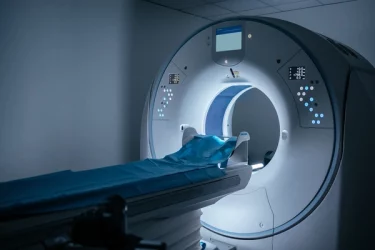Knee arthroscopy is available at the following locations
Barlborough
Birmingham
Devizes
Emersons Green
Gillingham
Ilford
Plymouth
Shepton Mallet
Southampton
St Mary’s Portsmouth
What is knee arthroscopy?
Knee arthroscopy, also known as keyhole knee surgery, is a surgical procedure that involves the reconstruction or replacement of a damaged knee joint. This procedure is commonly performed to relieve knee pain, stiffness, swelling, or instability. Injuries within the knee are often caused by the following:
Knee and hip replacements are the most common major orthopaedic procedures.
Why do I need a knee arthroscopy?
If you’re experiencing knee pain, stiffness, swelling, or instability, your doctor may recommend a knee arthroscopy.
Common conditions that may require knee arthroscopy include torn meniscus, loose cartilage or bone fragments, damaged cruciate ligaments or tendons, and arthritis. In some cases, non-surgical treatments like physical therapy or medication may be effective. However, if your symptoms persist or worsen, your doctor may recommend knee arthroscopy. This can help to diagnose and treat your condition.
How knee arthroscopy works
Knee arthroscopy is a minimally invasive surgical procedure that allows a surgeon to look inside the knee joint. It is performed using a small camera called an arthroscope. During the procedure, the surgeon makes a few small cuts in the skin near the knee joint into which the arthroscope is inserted. The arthroscope sends images of the inside of the knee joint to a monitor. This allows the surgeon to see the structures inside the joint without making a large incision.
The surgeon may also make other small cuts in the skin to insert surgical instruments. These include scissors or a laser and can perform various procedures on the knee. With these instruments, the surgeon can also repair or remove damaged soft tissue, such as torn meniscus or damaged cartilage.
Types of knee arthroscopy procedures
Depending on the nature of your knee condition, your surgeon may recommend one of several types of knee arthroscopy procedures:
- Diagnostic arthroscopy – performed to diagnose the cause of knee pain or other symptoms. Your surgeon will use the arthroscope to examine the inside of your knee joint and identify any damage or abnormalities
- Meniscectomy – removes the damaged portion of knee cartilage
- Meniscus repair – in some cases, it may be possible to repair a torn meniscus using sutures or other techniques.
- Anterior cruciate ligament (ACL) reconstruction – in the event of a torn ACL, a surgeon may recommend reconstructive knee surgery. This seeks to replace the damaged ligament with a graft from another part of your body or from a donor.
- Synovectomy – this procedure removes inflamed tissue in the lining of your knee.
Where is knee arthroscopy available?
This surgical procedure is available privately and on the NHS. The procedure is also available at the following Practice Plus Group locations:
- Barlborough
- Devizes
- Emersons Green
- Gillingham
- Ilford
- Plymouth
- Shepton Mallet
- Southampton
- St Mary’s Portsmouth
Knee arthroscopy waiting times
The current NHS waiting time for knee arthroscopy is around 18 weeks. Our Four Week Pledge means that private knee arthroscopy with Practice Plus Group currently has a waiting time for surgery of around two to four weeks.
Risks and side effects of knee arthroscopy
While knee arthroscopy is considered a safe procedure, as with any surgery, it does carry some risks. These may include:
- Infection – although rare, these can occur in the knee joint after surgery
- Blood clots – Blood clots can form in the veins of the legs after knee arthroscopy. This can be potentially life-threatening if they travel to the lungs
- Nerve damage – the small nerves around the knee joint can be damaged during surgery, leading to numbness or weakness in the knee, leg, or foot
- Bleeding – bleeding can occur after knee arthroscopy, which may require further treatment
- Swelling and pain – it’s normal to experience some swelling, pain, and stiffness after knee arthroscopy. These symptoms usually improve within a few days
- Anaesthesia risks – general anaesthetic carries some risks. These include allergic reactions and breathing difficulties.
Preparing for knee arthroscopy surgery
If you have been scheduled for knee arthroscopy surgery, the following steps can help you prepare:
- Follow your doctor’s instructions – these may include dietary restrictions and medications to avoid among others. Be sure to follow these instructions carefully to minimise your risk of complications
- Arrange for transportation – you will need to arrange for someone to drive you to and from the hospital on the day of your surgery. You will not be able to drive yourself home after being under anaesthesia
- Arrange for help at home – depending on the extent of your surgery, you may need some assistance with daily tasks during your recovery period. Consider arranging for a friend or family member to stay with you for a few days to help with cooking, cleaning, and other tasks.
- Dress appropriately – on the day of your surgery, wear comfortable, loose-fitting clothing that will be easy to put on and take off. Avoid wearing any jewellery or accessories that may interfere with the surgical procedure.
Knee arthroscopy recovery
Recovering from knee arthroscopy surgery can take several weeks. Here are some general guidelines for knee arthroscopy recovery:
- Rest and elevate your leg – in the first few days after surgery, it’s important to rest and elevate your leg. This will help to reduce swelling and promote healing. Keep your leg elevated above your heart as much as possible, and avoid putting weight on it
- Use ice packs – ice packs are used for pain relief and to reduce swelling in the first few days after surgery. Apply ice packs to your knee for 20 minutes at a time, several times a day
- Follow a physical therapy programme – Your doctor may recommend physical therapy. This will help you to regain strength and mobility in your knee. A physio will also advise you on specific exercises to do after the surgery to help with your recovery
- Avoid strenuous activities – Avoid strenuous activities and exercise for several weeks after surgery. These can put too much strain on your knee and slow down your recovery
- Watch for signs of infection – Keep an eye out for signs of infection. These include fever, increased swelling, redness, or drainage from the incision site. If you notice any of these symptoms, contact your doctor immediately.
Exercises after a knee arthroscopy
Here are some common exercises that you may be asked to do after knee arthroscopy:
- Quadriceps sets – These help to strengthen your thigh muscles. You can perform this exercise by sitting on a chair with your leg straight out in front of you. Tighten the muscles in your thigh and hold for 5 seconds. Relax and repeat for 10 repetitions
- Straight leg raises – These will strengthen your hip and thigh muscles. Lie on your back with your knee straight. Tighten the muscles in your thigh and lift your leg off the bed or floor. Hold for 5 seconds and then lower it back down. Repeat for 10 repetitions
- Hamstring curls – This exercise strengthens the muscles at the back of your thigh. Lie on your stomach with your knee bent. Slowly lift your heel towards your buttocks, hold for 5 seconds and then lower it back down. Repeat for 10 repetitions
- Calf raises – This exercise helps to strengthen your calf muscles. Stand with your feet shoulder-width apart, and slowly rise up onto your toes. Hold for 5 seconds and then slowly lower yourself back down. Repeat for 10 repetitions
- Ankle pumps – These will improve circulation and prevent blood clots. Lie on your back with your legs straight out in front of you. Flex your feet up towards your body and then point them down. Repeat for 10 repetitions.
Private knee arthroscopy costs
The cost of private knee arthroscopy surgery can vary depending on the healthcare provider, location of the hospital, and the type of surgery needed. For insured patients, the cost will depend on your health insurance coverage.
Practice Plus Group offers affordable private knee arthroscopy surgery with flexible payment options. Our fees include all necessary hospital charges, surgeon and anaesthetist fees, and post-operative physiotherapy.
Why choose Practice Plus Group?
At Practice Plus Group, we are committed to providing you with a positive experience and excellent clinical outcomes. With our short waiting times, high levels of cleanliness and infection control, and unrivalled Care Quality Commission (CQC) ratings, you can be assured of personalised care every step of the way.









